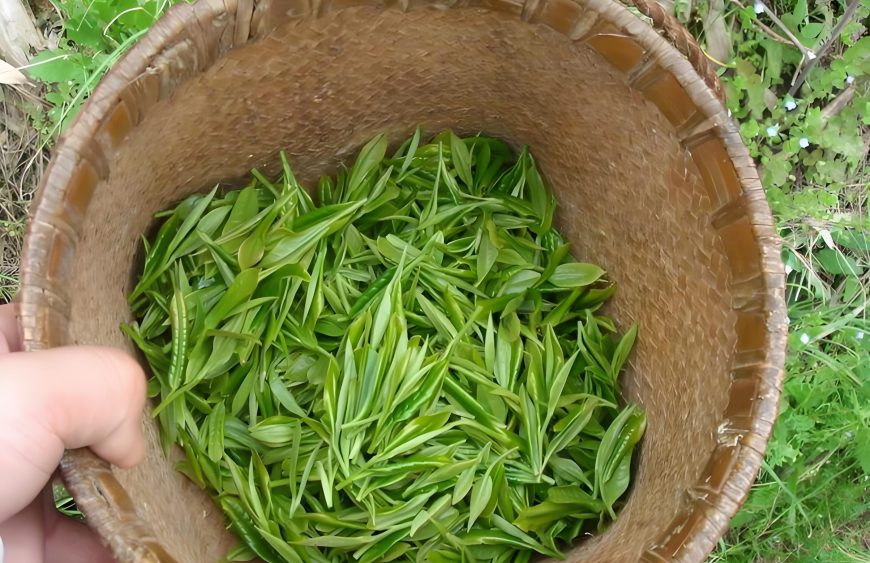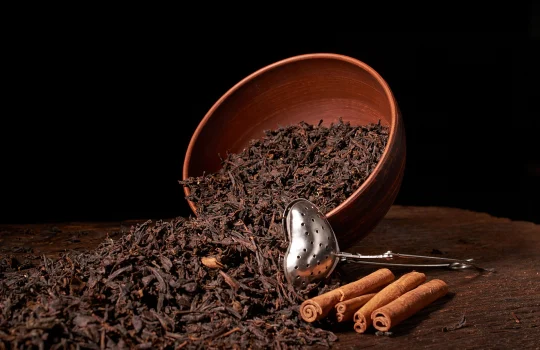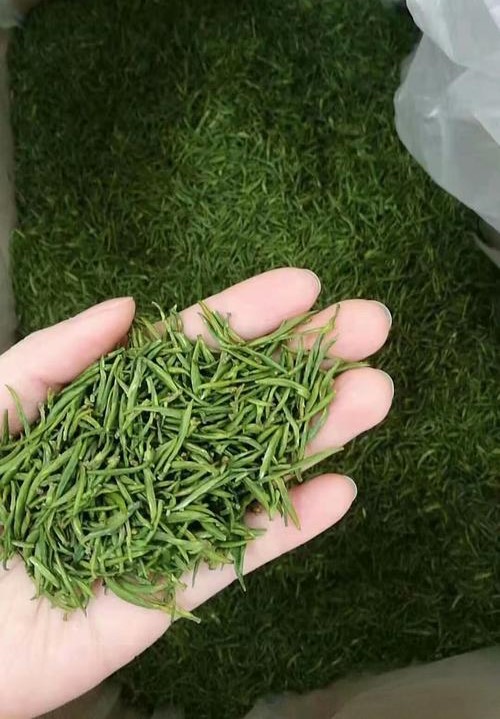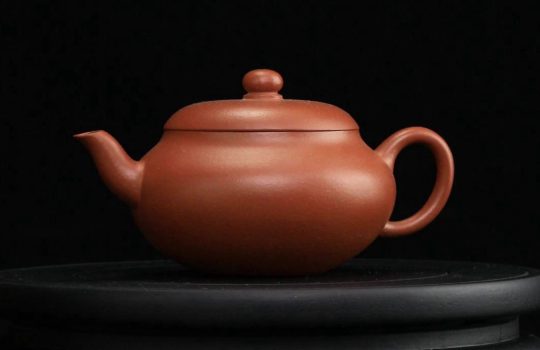Xinyang Maojian Origin: Xinyang, Henan Province
Quality Characteristics: Dry tea is uniform, slender, and straight, with a jade-green colour and prominent white downy hairs.
Tea liquor: Bright and clear, with an orange-yellow hue.
Tea aroma: Fresh and high-pitched, with a hint of ripe fruit.
Taste: Rich and mellow, with a lingering sweetness and refreshing aftertaste.
Leaf base: Tender green, uniform, and bright.
Detailed Introduction to Xinyang Maojian
Xinyang Maojian, also known as ‘Yu Mao Feng,’ is one of Henan Province’s famous specialties and one of China’s renowned teas. It is renowned worldwide for its unique characteristics: ‘fine, round, smooth, straight, abundant white downy hairs, high aroma, rich taste, and green tea liquor.’ As early as the Tang Dynasty, Xinyang Maojian was designated as tribute tea. During the Northern Song Dynasty, Su Dongpo remarked, ‘Among teas from the Huai River region, Xinyang is the best.’ Xinyang Maojian is harvested three times a year: spring, summer, and autumn. Among these, spring tea and autumn tea are considered the finest. A folk saying goes, ‘Spring tea is for friends, autumn tea is for parents,’ highlighting the preciousness of spring and autumn teas.
The taste of Xinyang Maojian
Use purified water and glassware, and add Xinyang Maojian according to personal preference. When brewing, first rinse the tea ware with water, then add the tea leaves. Rinse the tea first, then add water to steep. Wait for about half a minute before sipping. When the tea broth is about one-third gone, add more water and continue sipping. Continue adding water and sipping until the tea broth becomes淡 (generally, it can be sipped 3-5 times).
The appearance of Xinyang Maojian
Authentic Xinyang Maojian: The tea soup is tender green or yellow-green, bright, with a high, fresh aroma, a fresh, rich, mellow taste, and a sweet aftertaste. The buds and leaves grow alternately, the tender stems are round, the leaf edges have small serrations, and the leaves are thick, green, and lustrous. Counterfeit Xinyang Maojian: The tea soup is dark green and cloudy, with an unpleasant odour and no tea aroma. The taste is bitter and astringent, with a strong or weak off-flavour. The buds and leaves are generally opposite, the tender stems are mostly square, the leaf margins are generally without serrations, and the leaves are dark green, thin, and shiny like willow leaves.
Storage methods for Xinyang Maojian
Dry and moisture-proof: The warehouse for storing Xinyang Maojian should be dry and free from moisture. At home, use large, medium, or small stainless steel tea barrels or tea boxes with lids. Fill the containers with tea leaves, leaving no gaps, seal them tightly, and wrap them with two layers of plastic film. Plan your tea consumption schedule and minimise opening the lid to prevent the tea leaves from absorbing moisture.
Cleanliness and Odour Prevention: Tea easily absorbs odours, so the warehouse and tools used to store Xinyang Maojian should be dedicated, kept clean, hygienic, and free of odours. They should not be stored with items that have strong odours, such as fertilisers, pesticides, oils, soap, camphor balls, or mouldy substances. Additionally, tea should not be stored in packaging bags used for these items.
The Benefits of Xinyang Maojian
Promoting the conversion and absorption of lipid substances: The alkaloids in tea can form nucleotides with substances such as phosphoric acid and pentose. The compounds in nucleotide-like substances play an important role in the metabolism of lipid substances, especially in the decomposition and conversion of nitrogen-containing compounds, converting them into soluble absorbable substances, thereby achieving a fat-reducing effect. Purifying the digestive organs: The flavonoids in tea can relax the digestive tract, purify microorganisms and other harmful substances in the digestive organs, and also perform special purifying functions on the stomach, kidneys, and liver.
The Story of Xinyang Maojian
It is said that long ago, Xinyang had no tea. Under the oppression of the government and wealthy landlords, the villagers suffered from hunger and cold, and many fell ill with a mysterious disease called ‘fatigue rash.’ The epidemic grew increasingly severe, and many villages were left desolate.
In search of the sacred tree to cure the disease, a young woman named Chun Gu walked for ninety-nine days, growing exhausted and eventually contracting the plague herself. She collapsed by a small stream. At that moment, a leaf floated down from the spring water. Chun Gu placed it in her mouth, and immediately felt refreshed and full of energy. She found the sacred tree and plucked a seed. The tree spirit guarding the tea tree said that the seed must be planted within ten days. Chun Gu was heartbroken, so the old man transformed her into a bulbuls. The bulbuls flew back to their hometown and planted the seed. By then, her blood and strength had been exhausted, and she turned into a stone beside the tea tree. As the tea tree grew, flocks of young bulbuls flew out from the mountain. They pecked off leaves and placed them in the mouths of the sick, who were immediately cured. From then on, more and more people began to cultivate tea trees, leading to the creation of tea gardens and tea mountains.




